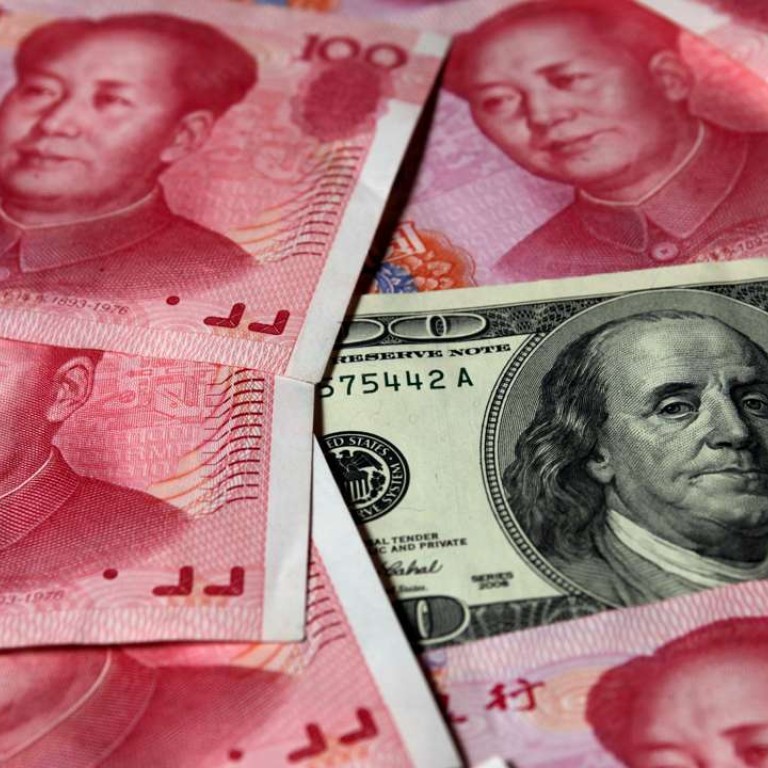
China to ‘gradually’ unwind capital account controls as currency outflow concerns ease, analysts say
Capital outflow pressures are abating in China, providing room for a loosening of capital account controls. But a depreciation of the yuan is still expected in the medium term, even as the pace of loosening is dependent on the US Federal Reserve’s rate tightening moves.
China scrapped a restriction on cross-border yuan payments imposed in early January, as outflow pressures eased in recent weeks, banking sources told the South China Morning Post on Tuesday.
However, foreign direct investment by companies were not included among the policy relaxation. Companies seeking to purchase overseas assets not related to their core business remain blocked from transferring funds to close the deals, banking and industry sources said.
In early January, the People’s Bank of China, China’s central bank, required commercial banks to stop processing cross-border yuan payments until they were in balance, as Beijing stepped up a campaign to curb record outflows of its local currency.
Banking sources told the Post the some of the restrictions were scrapped last Wednesday under verbal instructions by the PBOC.
As a result, the inflow and outflow balance of yuan is no longer a pre-condition for banks to process cross-border yuan payments.
“Beijing is starting to see the light at the end of the tunnel,” a report issued by DBS Group Research last Wednesday said.
“Foreign reserves have stabilised this year after last year’s fall, worries over capital outflows have started to abate, and policymakers may contemplate loosening capital controls,” the report said.
China’s foreign exchange reserves rose for the second consecutive month in March, the first two-month rise since April 2016.

China’s foreign exchange reserves rose by US$3.96 billion in March, after rising US$6.9 billion in February, bringing the forex stockpile to US$3.0091 trillion, data released by the PBOC showed.
The yuan devalued by 7 per cent in 2016, reflecting the steepest annual fall against the dollar since 1994. The decline triggered accelerated capital outflows, draining China’s foreign exchange reserves by nearly US$1 trillion in 29 months to US$3.05 trillion as of November 2016.
To stem the outflows, Beijing in November unveiled a series of capital control measures, including a crackdown on falsified trade data , and a requirement that banks refrain from international currency transactions until they balanced their books with a corresponding level of inflows.
But DBS analysts believes the tightening measures are to be gradually unwound as the outflow pressures ease.
China recorded US$24 billion worth of inflows in February, its first positive reading since January 2015, according to calculations by DBS.
Anotherreason for the policy U-turn is that Beijing is aware of “the cost brought by prolonged capital controls”, which hurts trade, cross-border investment, and China’s ambition to make the yuan a global currency, DBS analysts said.
The controls also impede the ability of Chines companies to acquire overseas assets.
Chinese companies completed 80 outbound mergers and acquisitions worth US$12.5 billion in the first quarter, a drop of 85 per cent in value compared with the US$82 billion worth of deals in the year-earlier period, Mergemarket data showed.
Yuan deposits held in Hong Kong dropped to 511.4 billion yuan (US$74.26 billion) in February, down 49 per cent from the end of 2014.
What’s more, contrary to expectations, the yuan’s inclusion in the International Monetary Fund’s reserves basket did little to boost its status as an international reserve currency.
“Foreign institutions trimmed their holdings of Chinese sovereign bonds in the first quarter in spite of Beijing’s attempt to encourage inflows,” DBS said in the report, adding that they expect the capital restrictions to be rolled back “in a gradual manner”.
Meanwhile, developments in Washington are also worth watching for clues to the likely direction of Chinese policy.
The US Treasury did not label China a currency manipulator in its twice-annual report issued on Saturday.
Comments by President Donald Trump that the US dollar was “too strong” in an interview with the Wall Street Journal last week helped to push down the dollar.
But analysts warn not to underestimate the impact of rising interest rates on global markets.
“The latest batch of data suggests the Fed remains behind the curve,” said Nathan Chow, economist of group research, DBS.
Zhou Hao, an economist at Commerzbank AG in Singapore, said the dollar was unlikely to weaken excessively in a rising interest rate environment.
“The US is still pretty much on track, another 1 to 2 [rate] hikes can still be expected. That said, the US dollar shouldn’t be as weak as Trump tries to see,” Zhou said.
Although China reported upbeat trade data for March, Zhou does not think the figures will have a big impact on the yuan, given that the trade surplus is narrowing.

